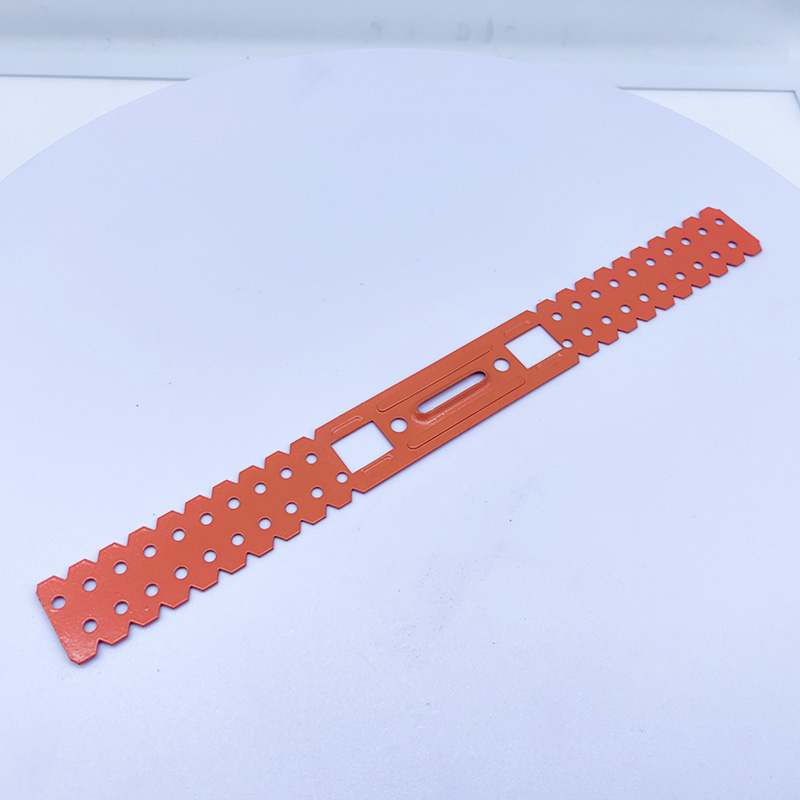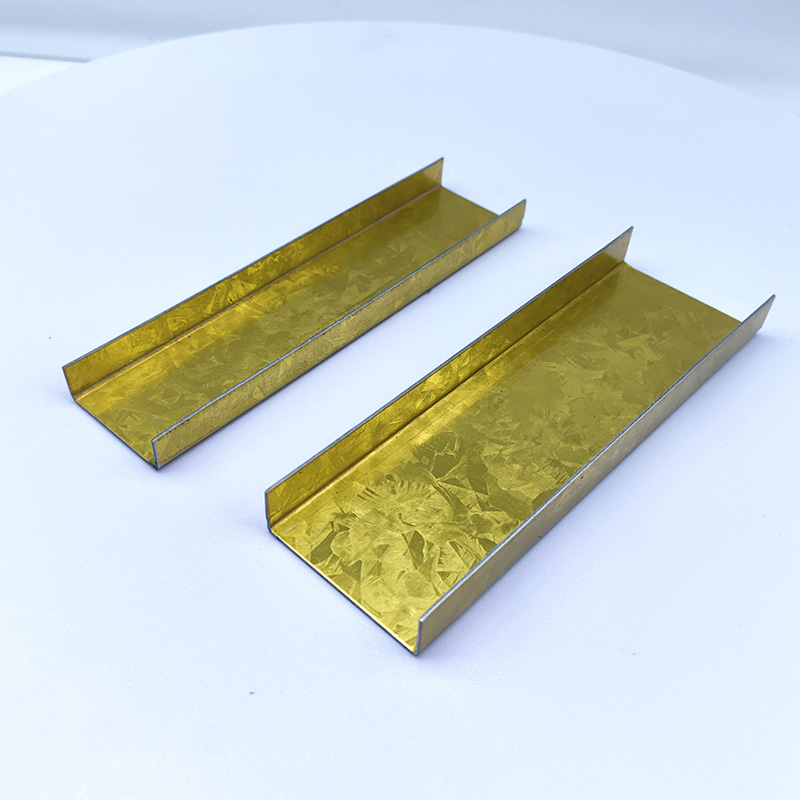How to Choose the Right Ceiling Grid System for Your Needs?
2025-01-11 16:13:42
In today’s construction and renovation industry, ceiling grid systems play a critical role. Whether it’s a bustling commercial center, a cozy home, or a busy industrial plant, these systems not only support the ceiling structure but also significantly influence the aesthetics and functionality of the space. However, with an array of products on the market, how do you select the perfect ceiling grid system for your specific needs? Let’s dive deeper into this topic.
1. Understanding the Basic Types of Ceiling Grid Systems
Main and Cross Tee Configurations
The main tees serve as the primary load-bearing structures, supporting most of the ceiling's weight. Their stability directly impacts the safety of the entire system. Typically, main tees have larger cross-sections and greater rigidity, ensuring even distribution of pressure. Cross tees, on the other hand, provide auxiliary support and refine the grid layout. Together, they form a robust framework, much like the skeleton of the human body. For instance, in large shopping malls, heavy-duty main tees are spaced farther apart, while closely arranged cross tees handle extensive ceiling coverage requirements.
Material Comparisons
· Aluminum Alloy: Known for its lightweight nature and excellent strength-to-weight ratio, aluminum alloy grid systems stand out. Their superior corrosion resistance ensures structural stability even in humid or chemically harsh environments. Additionally, aluminum alloys can be shaped into intricate, aesthetically pleasing designs, catering to modern architectural preferences. However, the relatively high material cost makes them a pricier option.
· Galvanized Steel: Galvanized steel grids boast exceptional strength, making them ideal for heavy load applications in commercial spaces and industrial plants. The galvanized coating protects against rust, extending their lifespan. However, steel’s heft often requires more manpower during installation and has a more industrial look.
· Plastic: Plastic grid systems are cost-effective, lightweight, and easy to install, making them a practical choice for budget-conscious projects or spaces with low load requirements, such as temporary exhibition booths or home storage rooms. They come in various colors and can create vibrant atmospheres. However, plastic is less durable, prone to aging, discoloration under prolonged sun exposure, and lacks the strength of metal options.
2. Selecting Systems Based on Space Function
Commercial Spaces
In high-traffic areas like malls, supermarkets, or office lobbies, the ceiling grid system must have robust load-bearing capabilities. Frequent movement, heavy lighting fixtures, and hanging signage require grids with superior strength. Additionally, fire resistance is critical to delay the spread of fire and provide time for evacuation. For example, a renowned mall used high-strength galvanized steel grids with fire-resistant coatings to ensure safety during peak hours.
Residential Areas
In homes, aesthetics and sound insulation take precedence. Lightweight aluminum or sound-absorbing plastic grids are popular for creating a comfortable ambiance. Their diverse styles, from minimalist designs to vintage patterns, cater to homeowners’ unique tastes, adding charm to every corner of the home.
Industrial Facilities
Industrial environments demand grids that resist corrosion and moisture, such as specially treated galvanized steel or corrosion-resistant alloys. The design should also allow for easy cleaning and maintenance to handle accumulated dirt and ensure safe, high-quality air in the facility.
3. Considering Space Dimensions
Large Spaces
In large venues like exhibition centers or airport terminals, installation efficiency is crucial. Ceiling grid systems with easy installation and seamless connections can significantly shorten construction timelines and reduce labor costs. Standardized modular designs ensure high flatness, avoiding uneven surfaces that may detract from the overall aesthetic.
Small Spaces
In smaller spaces like offices, restrooms, or storage areas, flexibility is key. Grids that can handle irregular edges and minimize material waste are ideal. Plastic grids, which can be easily cut and shaped, are excellent for such applications.
4. Prioritizing Installation Ease
Advantages of Modular Design
Modular ceiling grids are like building blocks; pre-manufactured components fit together easily during installation. Their detachable and reconfigurable nature offers great convenience for future repairs or renovations. For example, in a shopping mall, when store layouts were reconfigured, modular grids were easily relocated, saving significant time and costs.
Supporting Tools and Installation Guides
A comprehensive installation guide and proper tools can make a significant difference. Some brands provide online instructional videos, demonstrating step-by-step processes. This not only improves efficiency but also minimizes risks associated with improper installation.
5. Making Budget-Conscious Choices
Price Range Analysis
High-end grid systems often use premium imported materials and advanced manufacturing techniques, such as intricate surface treatments and unique structural designs, which come at a higher price. Mid- to low-range products typically use standard materials and simpler processes, focusing on affordability. For the same area, an imported aluminum grid system may cost 30%-50% more than a domestic galvanized steel grid system.
Balancing Quality and Performance
A limited budget doesn’t mean settling for low-quality products. Key performance features should be prioritized. For example, in residential settings where aesthetics matter more than load-bearing, a domestic high-quality plastic grid with fine surface finishes can be an economical yet elegant choice.
6. Matching Aesthetics and Style
Style and Design Harmony
· Modern Minimalism: Grids with clean, narrow aluminum strips create an open and bright feel.
· Classical European: Decorative grids with ornate patterns and scrollwork bring elegance and luxury.
· Traditional Chinese: Symmetrical patterns like fretwork or auspicious motifs paired with wooden finishes evoke a sense of cultural heritage.
Surface Treatments
· Matte Finishes: Soften lighting, creating a cozy ambiance suitable for bedrooms or study rooms.
· Glossy Surfaces: Exude modernity and sophistication, perfect for commercial showrooms.
· Engraved Patterns: Add depth and personality through dynamic light and shadow interplay.
7. Maintenance and Durability
Ease of Cleaning
Open grid systems often accumulate dust, especially in factories or roadside shops. Smooth, seamless grids like injection-molded plastic or polished metal grids are easier to clean with simple wipes or vacuuming.
Ease of Repairs
When a component is damaged, such as a cracked tee or a loose connector, accessible replacement parts are crucial. Reputable brands often have local service centers and ample parts supplies, ensuring minimal downtime and inconvenience.
8. Environmental and Safety Considerations
Eco-Friendly Materials
As health concerns rise, eco-friendly grid materials have gained attention. Premium grids meet strict environmental standards, free of harmful substances like formaldehyde or benzene, making them ideal for residential areas, schools, and daycare centers.
Safety Certifications
Certified fire-resistant grids can slow flame spread during a fire, protecting lives and property. Earthquake-tested systems ensure stability during natural disasters, minimizing risks of ceiling collapse.
9. Case Studies and User Feedback
Lessons from Success and Failure
For instance, a high-end office building experienced grid deformation and required costly reinstallation due to insufficient load capacity. In contrast, a hotel chain used standardized aluminum fire-resistant grids across its branches, earning praise for both performance and aesthetics.
Valuable User Insights
Online reviews and market feedback can provide practical insights. Positive comments often highlight ease of installation, while negative reviews might reveal pitfalls like poor customer service or difficult repairs.
10. Conclusion
Choosing the right ceiling grid system is no simple task—it requires careful evaluation of space functionality, dimensions, budget, aesthetics, maintenance needs, and environmental safety. By combining objective assessments with lessons from real-world examples, you can find the ideal grid system that enhances the quality and comfort of your space, turning every upward glance into an experience of excellence.

A Double Anti-Rust Gold Partition Wall Stud is a type of steel stud commonly used in the co...

A CD UD Profile Furring Clip U Clamp is a type of metal fastening component used in the ins...

A 60mm Ceiling Grid refers to a type of suspended ceiling system, commonly used in commerci...

38mm Main Tee and 50mm Main Tee refer to the widths of the main tee profiles used in suspen...

